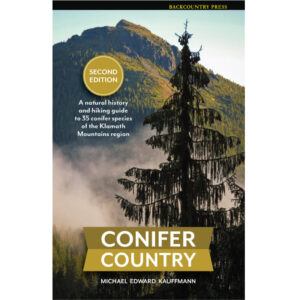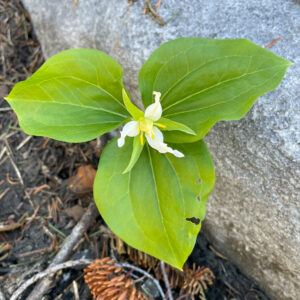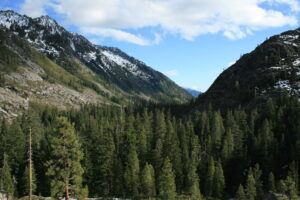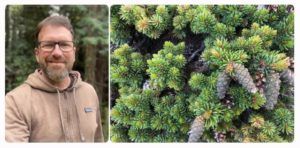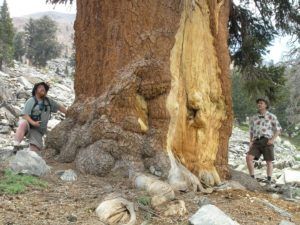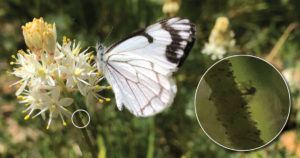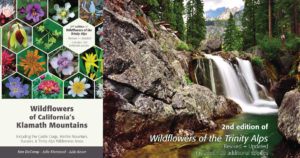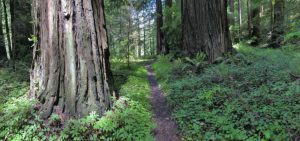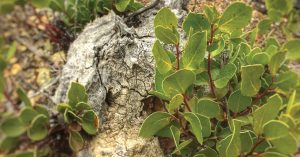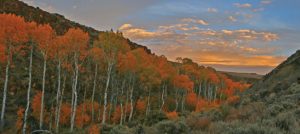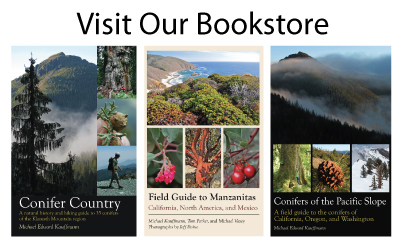Twelve years after publishing “Conifer Country,” author and ecologist Michael Kauffmann reflects on the journey of the book and its impact. His work has led to a thriving business, Backcountry Press, and acknowledgment as a conifer ecologist. Changes in the landscape, like wildfires and climate shifts, prompted updates to the book, emphasizing the balance between appreciation and stewardship of ancient forests and rare conifers. Kauffmann encourages readers to explore and protect these natural wonders.
“New” Trillium in Northwest California
In a paper published in Madroño, Salmon Mountains wakerobin (Trillium oettingeri) has been elevated to a new species.
Sip the Forest: A Guide to Pacific Northwest Conifer Teas
Embark on a flavorful journey through the lush forests of the Pacific Northwest, where the evergreen trees are not only charismatic megaflora, but also ingredients for a unique tea experience.
Nature’s Archive features Michael Kauffmann
Michael Hawk, the creator of Nature’s Archive, featured Michael Kauffmann a few weeks back. They discussed the many things that make conifers such an amazing group of plants including their evolutionary history, what makes them different from other trees, and gives us a special look at the amazing diversity of conifers in his area – […]
Magnificent Five-needle Pines of Western North America
This 2-part webinar will explore the natural history of six closely related five-needle pines of western North America. We have created a “quiz” to prep you for the webinar and prompt you with a few amazing facts about this group within the beautiful and regal soft (Strobus) pines.
Cryptic Carnivores
Sticky trap carnivory discovered in western false asphodel (Triantha occidentalis) The botanical world is being rocked by a new lineage of carnivorous plants described by Qianshi Lin et al. (August 2021)! Previous to this discovery scientists have recognized only 11 independent origins of plant carnivory—and now there is a 12th. This cryptic carnivore secretes a digestive […]
Wildflowers of California’s Klamath Mountains
AVAILABLE NOW! Including the Marble Mountain, Russian, and Trinity Alps Wilderness areas Wildflowers of California’s Klamath Mountains features flowering plants found within one of the most biodiverse temperate mountain ranges on Earth. This photographic collection is representative of the most common, beautiful, and unique plants across this amazing region.• 629 species, subspecies, and varieties of wildflowers• […]
Botanical Tales of the Pacific Crest Trail
The Making of a “Super-Naturalist” by Matt Berger Over two PCT thru hikes I took tens of thousands of plant photos, figured out each plants’ identity, and uploaded these observations to citizen science websites. Getting to this point was a process that I took one step a time. Now, I’m ready to share what I’ve […]
Late Summer Wildflowers
Of The Klamath Mountains The Klamath Mountains are vast and encompass many ecological zones and elevations. Geology, ranges in altitude, and variable weather conditions make the region variable for wildflower blooms depending on species and region. Wildflower season can begin as early as mid-December in the lower elevations and continue into late October or even […]
Grizzly Creek Redwoods State Park
In the hinterlands of Humboldt County, Grizzly Creek Redwoods State Park is a wonderland of old-growth redwood forest and swimming delights.
Obligate & Facultative Seeding Manzanitas
Last weekend, I hiked in Trinity County along a low-elevation, fire-prone section of the Bigfoot Trail between Highway 3 and Hayfork and was able to witness obligate & facultative seeding in action. From Field Guide to Manzanitas, Backcountry Press, 2012 One-third of manzanita species are facultative seeders. These are species that regenerate post-fire by both seed and […]
West’s Best Fall Hikes
Fall in the West is a time of rejuvenation. With the shift of the California Current, rains begin to fall in California after a summer of drought. The high country along the Pacific Slope finds snow returns to the high country. What follows are four destinations to enjoy fall colors in the West.
